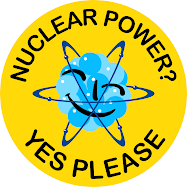Peruse the IAEA's website and you will find the results of a June 2009 meeting on Construction Technologies for New Nuclear Power Projects. Participants include Toshiba, Korean Hydro, Westinghouse, AECL, Sargent and Lundy, TEPCO, Murray and Roberts, and PMBR. Scroll down the page and you will find links to a number of informative presentations made during this event. Just a few details are included below.
Slip forming is Reported to cut the concrete construction phase of a reactor building from 6-9 months down to 13 to 20 days. In this innovative technique, concrete is poured continuously between two climbing wall faces. Multiple platform levels allow for preparatory work, concrete pouring and curing to take place as the form 'slips' upward at a rate from 2.5 to 15 cm per hour. In addition to being faster, the elimination of 'cold joints' makes the resulting structure safer (improved resistance to leakage).

Slip forming - start

Open Top Construction combined with modularisation
The Reactor Building is partially completed and left 'open'. Very heavy lift (VHL) cranes are then used to install large components from above. Mechanical and electrical systems are installed from and through building openings in parallel. Open top construction permits more activities to be progressed in parallel compared with construction techniques of the 1970's.
Modular construction reduces field work and, because the modules are fabricated in the controlled environment of a fabrication facility or a covered assembly area near the main site, quality is improved. The challenges include increased front-end engineering and planning effort, increased rigging and transport costs, and early material requirements.

Modular component - RB base slab rebar mat

Modular component - large bore piping module

Modular component - Integrated plant, large bore pipe and structure

Modular component - Upper drywell (BWR)
Modular component - Control room
Advances in system assembly and fabrication have also added the double advantage of reduced time and improved quality.

Automated large bore pipe joint welder
Modern nuclear plant construction techniques - in particular open top construction, slip forming and modularisation - require considerable planning. For example, detailed engineering must be complete long before construction initiation to support the fabrication and assembly of large modules like those shown above - to the timeline demanded by the project schedule. Modern procurement processes receive the final engineering design documents and develop detailed estimates, determine material and component lead times, and pre-qualify potential suppliers. Experienced planners and schedules develop installation plans that are often referred to as 'choreographies'; developed so well that costly support equipment, such as heavy lift cranes, practically never come to a rest.
However, design standardisation reduces the engineering burden considerably from First of a Kind (FOAK) out the the n-th construction project. For example, once a complex module has been engineered for a standard plant design, very little engineering effort is required to reproduce the same module for the 2nd, 3rd,... n-th plant to be constructed.

In addition, activities are planned to run in parallel, non-stop, regardless of weather conditions.

All weather construction roof - removable roof staged to the side (4 sections in blue)

All weather construction roof - mounted in position
Continuous feedback and incorporation of lessons learned
Any competent company will incorporate the lessons of one project into the next. Another good practice is to draw from the experience from a cross-cutting of industries. As one might expect, experience is being drawn from all aspects of modern, large scale construction, such as experience from South Africa's Murray and Roberts.
Finally, the meeting included a presentation on the progress of the inaugural AP1000 project (China). The presentation includes examples of the techniques mentioned above.
















